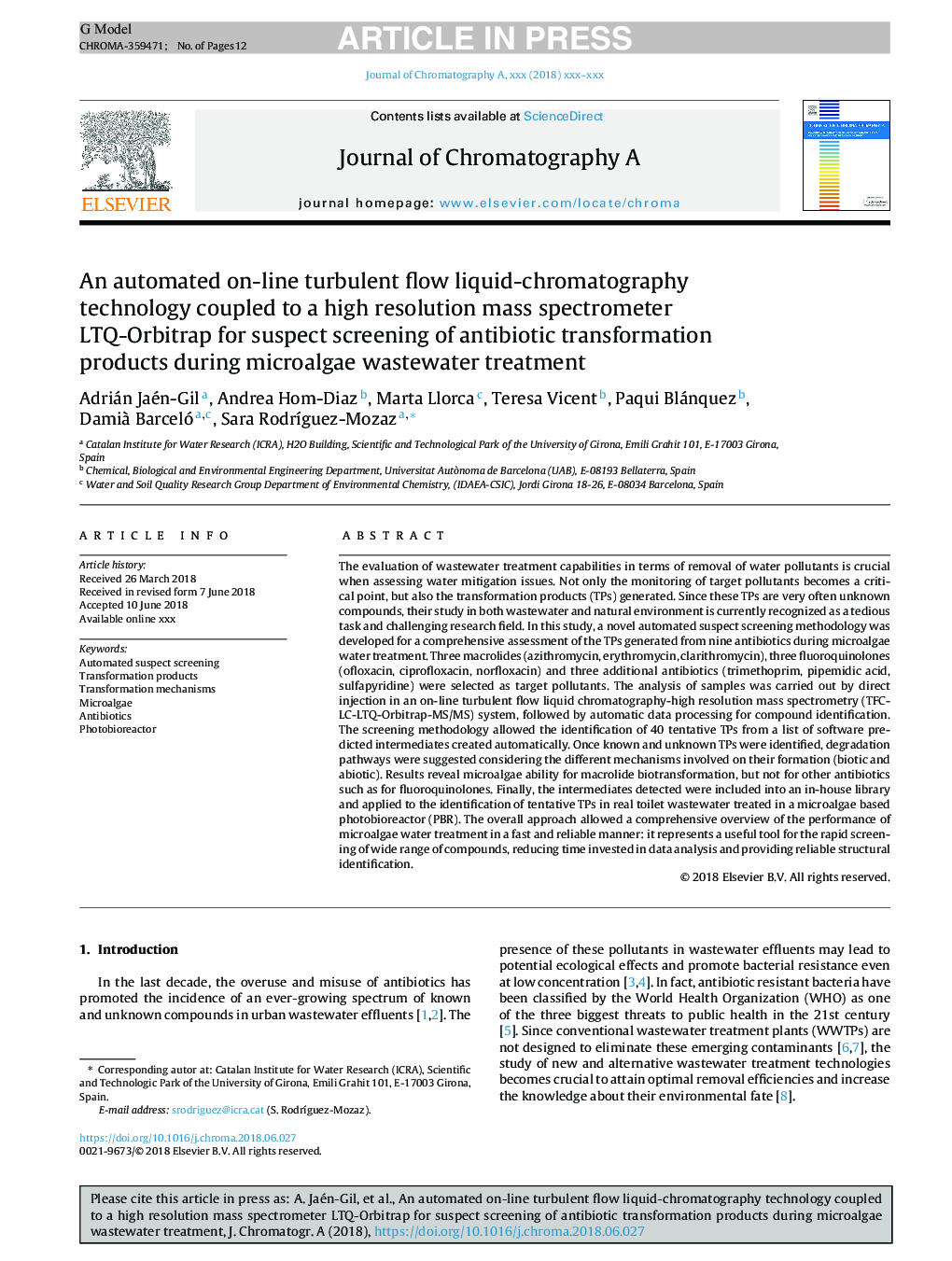| Article ID | Journal | Published Year | Pages | File Type |
|---|---|---|---|---|
| 7607366 | Journal of Chromatography A | 2018 | 12 Pages |
Abstract
The evaluation of wastewater treatment capabilities in terms of removal of water pollutants is crucial when assessing water mitigation issues. Not only the monitoring of target pollutants becomes a critical point, but also the transformation products (TPs) generated. Since these TPs are very often unknown compounds, their study in both wastewater and natural environment is currently recognized as a tedious task and challenging research field. In this study, a novel automated suspect screening methodology was developed for a comprehensive assessment of the TPs generated from nine antibiotics during microalgae water treatment. Three macrolides (azithromycin, erythromycin, clarithromycin), three fluoroquinolones (ofloxacin, ciprofloxacin, norfloxacin) and three additional antibiotics (trimethoprim, pipemidic acid, sulfapyridine) were selected as target pollutants. The analysis of samples was carried out by direct injection in an on-line turbulent flow liquid chromatography-high resolution mass spectrometry (TFC-LC-LTQ-Orbitrap-MS/MS) system, followed by automatic data processing for compound identification. The screening methodology allowed the identification of 40 tentative TPs from a list of software predicted intermediates created automatically. Once known and unknown TPs were identified, degradation pathways were suggested considering the different mechanisms involved on their formation (biotic and abiotic). Results reveal microalgae ability for macrolide biotransformation, but not for other antibiotics such as for fluoroquinolones. Finally, the intermediates detected were included into an in-house library and applied to the identification of tentative TPs in real toilet wastewater treated in a microalgae based photobioreactor (PBR). The overall approach allowed a comprehensive overview of the performance of microalgae water treatment in a fast and reliable manner: it represents a useful tool for the rapid screening of wide range of compounds, reducing time invested in data analysis and providing reliable structural identification.
Related Topics
Physical Sciences and Engineering
Chemistry
Analytical Chemistry
Authors
Adrián Jaén-Gil, Andrea Hom-Diaz, Marta Llorca, Teresa Vicent, Paqui Blánquez, Damià Barceló, Sara RodrÃguez-Mozaz,
